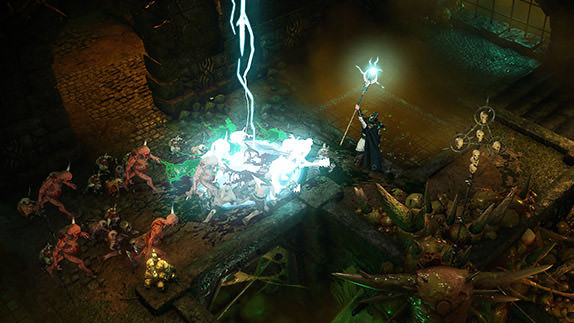Daylight Review

 By Kevin Mitchell | April 29, 2014
By Kevin Mitchell | April 29, 2014
Daylight has the distinction of being the first game released powered by Unreal Engine 4, as well as the first game ever to make all the hairs on both my arms stand up. Regaining consciousness in an abandoned hospital, Sarah is left with no memory of how she wound up in such an ominous place. Finding a smartphone nearby, she uses it as both a permanent source of light and a map to navigate through the deserted hospital and nearby surroundings.
The gravelly voice that calls the cellphone is your only connection with the outside world as Sarah makes her way through the dark corridors. The first half of the game absolutely nails the survival horror sensation. Hallways are cluttered with rotting couches with bugs crawling out of them, lights flicker ominously, and you'll swear the wheelchair you just passed made a creaking noise. Rooms are just as haunting: pictures line the walls with scratched-out eyes, fallen chairs upright themselves, realistic-looking cloth half-covers empty bathtubs and cribs, and you never know if something will jump out in front of you.
To advance through the story, you must find various letters, photos, and newspaper clippings scattered about called remnants. To see the remnants, you have to crack open a green glow stick and scour the environment. The game is fairly generous with glow sticks—I never worried about running out, although the message when you max out your inventory is quite humorous: "You have too many glow sticks." Every time a new remnant is discovered, the threat level increases, making it more likely your face will be melted off by an evil spirit in a Victorian-era dress. Upon collecting all of the remnants in a level, a sigil will appear—an item related to the dark past of the hospital—allowing you to open the sealed glowing door and move onto the next area.
Navigating through the hospital made me feel uneasy, thanks to the ambient music, whispering voices in the distance, and small visual details. Elements such as dust swirling around the ground and ceilings help set the game's dark mood. Don't bother looking up any walkthroughs for the game, as the labyrinth-like layouts are procedurally generated each playthrough. Experiencing the same type of scares repeatedly may grow stale if they occur in the same static location every time, but you'll never know what the next room will bring in Daylight. This is a good thing, as the game isn't overly long, being able to be completed in less than three hours.
In similar fashion to both Slender and Outlast, combat is nonexistent. Your only weapon against the ghostly apparitions is to turn around and run away or use a flare to fend them off, turning the entire room a hellish red hue. If you pop a flare, however, you will drop your glow stick, so you won't be able to defend yourself and search for remnants at the same time.
Zombie Studios hopes that Daylight becomes a favorite game to be streamed among fans, adding interaction with those watching the stream on both PlayStation 4 and PC. There are specific words that can be typed out in the chat that will trigger various sound effects to mess with the broadcaster, such as a cat's meow, screaming in the distance, and even an owl's hoot. A spamming system has been put in place to limit trolls from spamming commands nonstop. Atlus and Zombie Studios have yet to confirm the entire list of commands, so I expect there will be a few that have yet to be discovered.
Simply Put
I found Daylight a better survival horror experience than any of the other titles that fall into the same subcategory. The game may only last a couple of hours, but the randomness of each playthrough and modest price point make Daylight an enjoyable and tense experience.
Note: Daylight was reviewed on PC. A digital copy of the game was provided by the publisher/developer.




